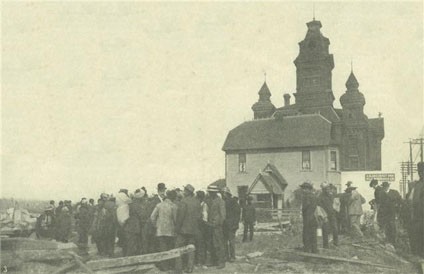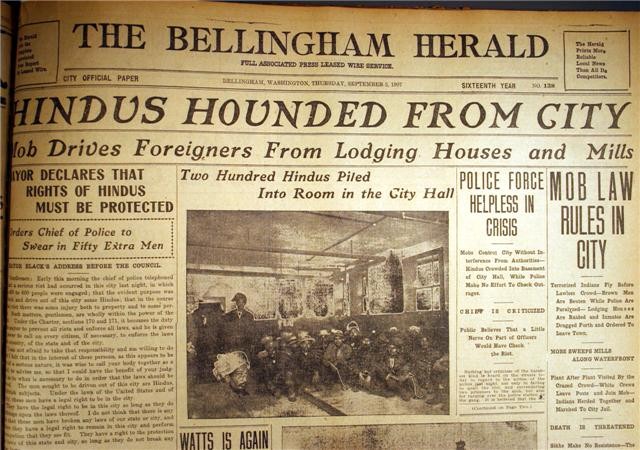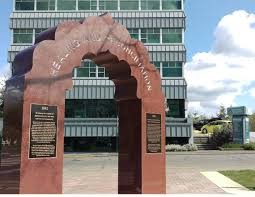Arch of Healing and Reconciliation (1907 Bellingham Riots)
Introduction
Text-to-speech Audio
Images
Crowds gather at Bellingham's City Hall on September 5th, 1907, the day following the riot. The old city hall is now the Whatcom Museum

Front page of Bellingham Herald the day following the riot. Source: http://www.wce.wwu.edu/resources/AACR/documents/bellingham/main/1.htm

This granite monument was dedicated in 2008

Backstory and Context
Text-to-speech Audio
Racial tensions and job competition between white workers and recent Asian immigrants in Washington state reached a fever pitch in the fall of 1907. On September 4th of that year, approximately 500 white men in Bellingham armed themselves and vowed to South Asian workers from "their" city. They took two hundred migrants as their prisoner and placed them in the basement of the City Hall, beating any police officer that stood in their way. In the wake of this and other attacks, nearly every Asian immigrant left Bellingham. As the local newspaper celebrated, it was as if the Asian community had been "wiped off the map."
Sources
James Gregory, University of Washington Seattle. The 1907 Bellingham Riots, Seattle Civil Rights & Labor History Project. Accessed February 8th 2020. https://depts.washington.edu/civilr/bham_intro.htm.
